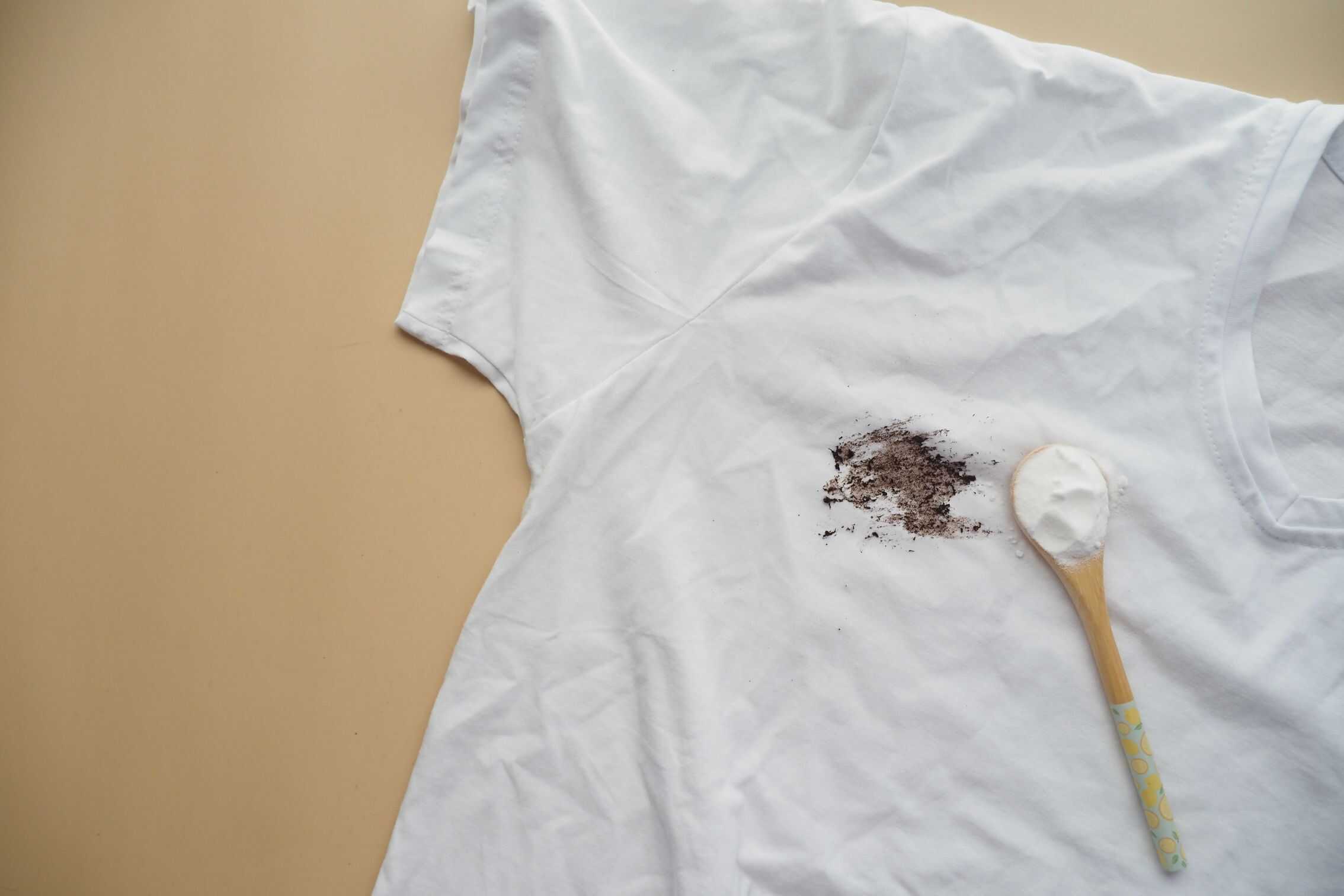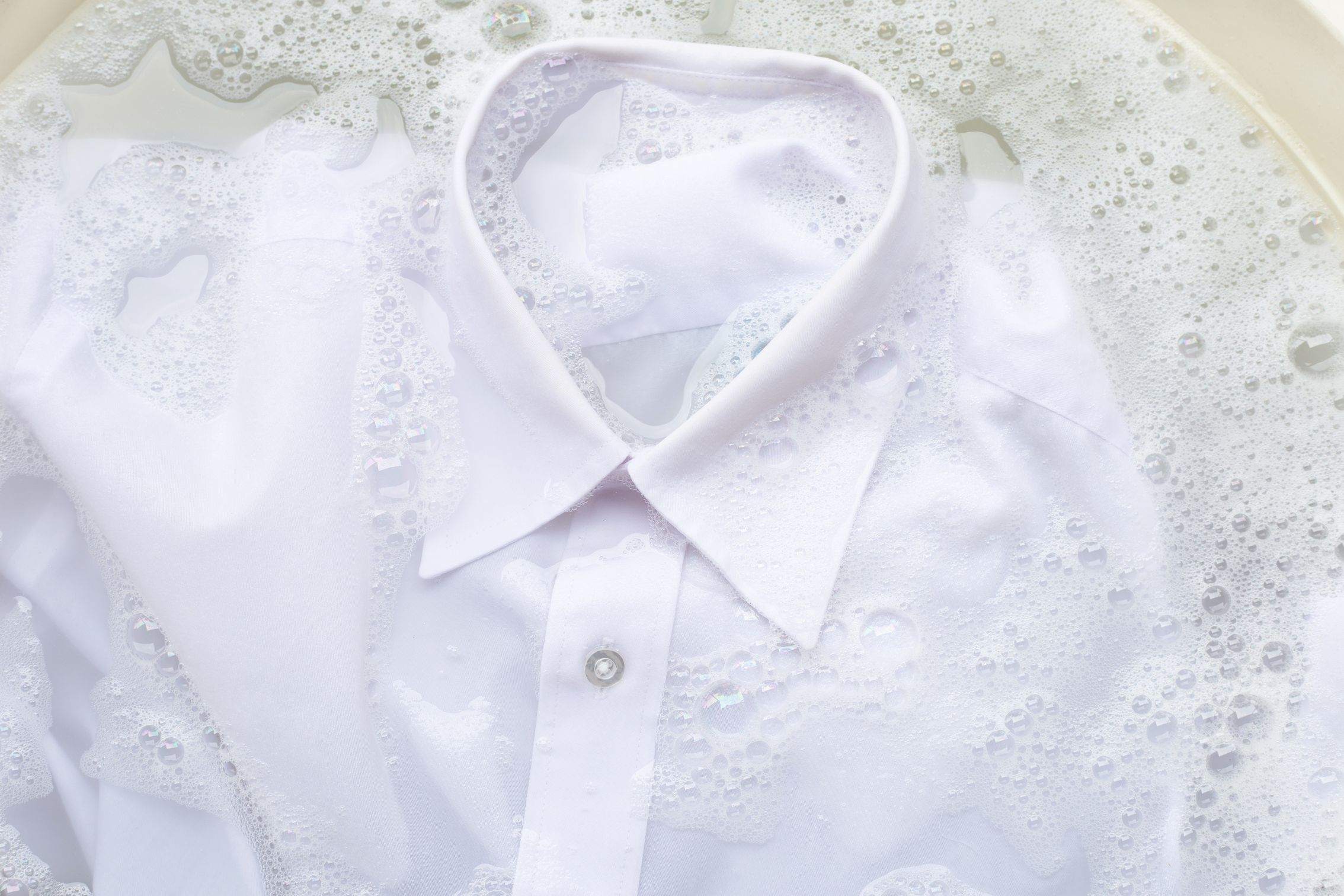A Practical Guide to Buying Reusable Water Bottles

This post was last updated in 2023
Hello there my eco-conscious warriors 😊
Ever found yourself staring at the wall of reusable water bottles in a store, overwhelmed by all the choices? Do you end up grabbing whatever and before you know it, it’s srcuffed up and grubby and doesn’t last as long as it should?
Don’t worry, you’re not alone. I’ve been there! I have wasted so much money (and resources) on really poor choices.
In this guide, I’m covering what to look out for when buying resuable water bottles so you don’t make the same mistakes I have (and so I stop making those same mistakes also!).
Specific topics covered include:
In these sections I cover material choice, the info out there on lids and bacteria growth and all the nitty-gritty details that will help you make the right choice.
If you are after a list of brands and products worth considering, check out this blog post for a list of products I recommend.
Otherwise, grab your favourite drink and let’s get started on this reusable water bottle adventure together💧🌿
What to look for when buying reusable water bottles
When buying reusable water bottles the aim is to buy something that will last and will suit your lifestyle. With that in mind, stainless steel bottles are the best options available, preferably one with either a screw top or a wide-mouth lid.
I delve more into material types and lid types in the sections that follow. They are the two most important elements you need to consider to ensure you buy a high-quality, long-lasting product.
Everything else that goes into buying a reusable water bottle is a matter of personal choice. That includes size and design.
Sizes
In Australia, reusable water bottles come in various sizes to cater to different needs and preferences. The standard sizes of water bottles sold in Australia typically include:
When choosing the right size for your reusable water bottle, consider your daily routines, activities and personal hydration needs.
If you’re frequently on the move or engage in physical activities, a larger bottle may be more suitable. On the other hand, if you’re mainly using it at your desk or for short outings, a smaller bottle could be more practical.
It’s also a good idea to think about the availability of water sources for refills and how often you’re willing to clean and refill your bottle.
Ultimately, the size you choose should align with your lifestyle and ensure that you stay properly hydrated.
Design
Beyond functionality, the aesthetics of your reusable water bottle matter too.
Fortunately, many brands have recognised that a reusable water bottle can be a fashion accessory as much as a utility item. They’ve taken style into account and offer a diverse range of designs, colours and patterns to cater to various tastes.
From minimalist, sleek bottles to vibrant, eye-catching options that add a pop of colour to your day, there’s a design for everyone ☺️
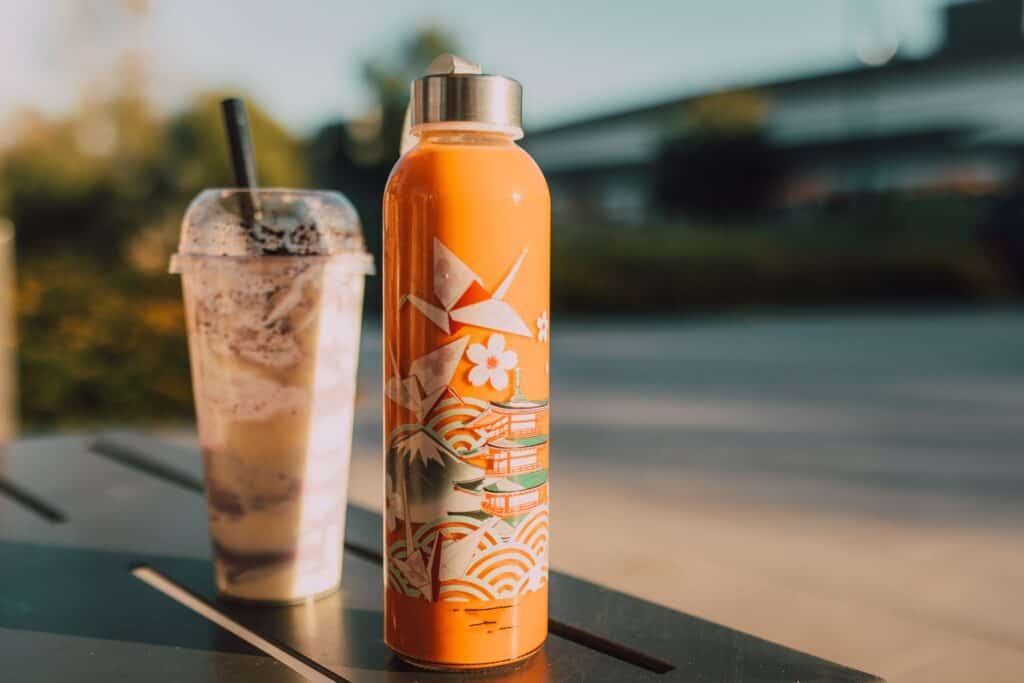
Materials to look out for when buying reusable water bottles
When it comes to choosing a reusable water bottle, material choice is everything. Reusable water bottles are typically made from stainless steel, plastic, glass, aluminium or ceramics. The choice is important as it determines the longevity of your bottle, as well as how sustainable the bottle is.
Here’s a summary of the benefits and drawbacks of these material types:
Stainless Steel:
- Durability: Stainless steel water bottles are known for their exceptional durability. They can withstand the rigours of everyday life, from accidental drops to being tossed into backpacks without a second thought.
- Temperature Control: If you are after an insulated drink bottle, stainless steel is your friend. These insulated water bottles will keep your drinks cold for hours in hot weather and hot for extended periods in colder environments.
- Non-Toxic: Stainless steel is a non-toxic and non-reactive material, so it won’t leach any harmful chemicals into your beverages. This ensures that your water or other drinks taste pure and untainted.
- Easy to Clean: Cleaning stainless steel bottles is a breeze. Most are dishwasher-safe, and their smooth, non-porous surface doesn’t retain odours or stains, which can be a common issue with some other materials.
- Drawbacks: If food-grade steel is not used, it can leave a metallic aftertaste that you may not like and it is a heavier material when compared to plastic. It requires a lot of energy to produce stainless steel (although it is 100% recyclable, which makes it an environmentally friendly option).
Plastic:
- Lightweight: Reusable water bottles made from BPA-free plastic are lightweight and easy to carry, making them a practical choice for people on the move.
- Budget-Friendly: Plastic bottles are often more budget-friendly than their stainless steel or glass counterparts, so they’re a cost-effective option.
- Variety: Plastic bottles come in a wide range of shapes, sizes, and designs, offering plenty of options to suit your style and preferences.
- Drawbacks: Plastic is not infinitely recyclable, so they aren’t the most environmentally sustainable option. Very few brands use recycled materials in their bottles.
Glass:
- Purity of Taste: Glass bottles are a top choice if you want your drinks to taste as they should, without any interference from the container. Glass is non-porous and won’t retain flavours or odours from previous beverages.
- Eco-Friendly: Glass is a sustainable and environmentally friendly choice. It’s 100% recyclable and can be used repeatedly without any degradation in quality.
- Visible Hydration: With a glass bottle, you can easily monitor your water intake and see when it’s time for a refill.
- Drawbacks: Glass bottles can be more delicate and prone to breakage if dropped, so they may not be the best option for those with an active or adventurous lifestyle.
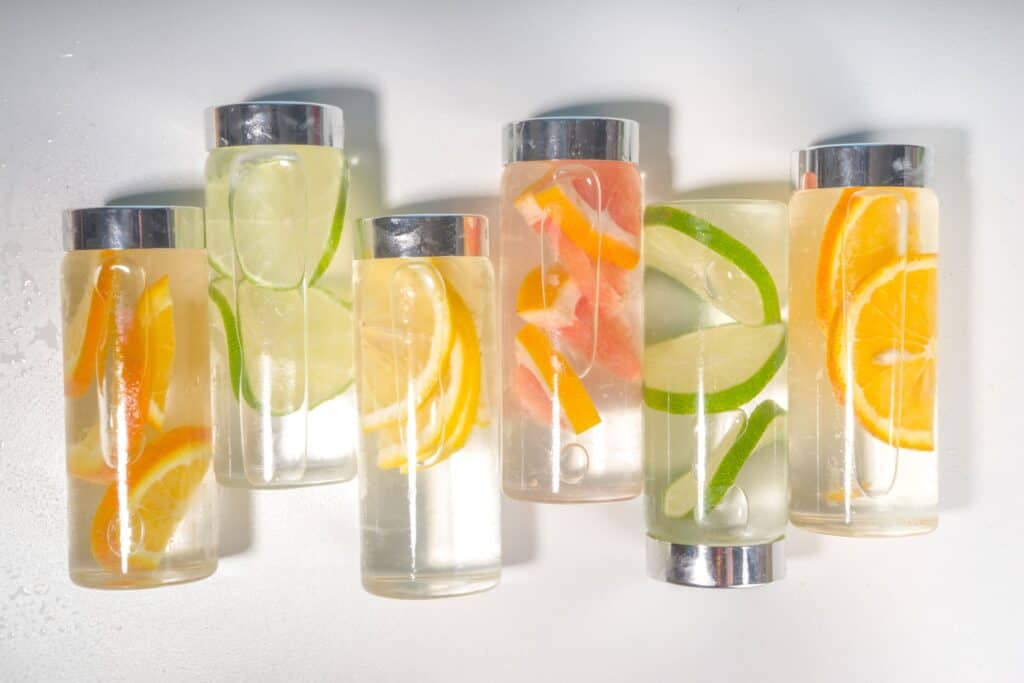
Aluminium:
- Lightweight and Portable: Aluminum water bottles are prized for their lightweight design, making them easy to carry around. They’re an ideal choice for those on the move.
- Eco-Friendly: Aluminum is a highly recyclable material, making it an environmentally responsible choice. Choosing an aluminium bottle reduces your carbon footprint and minimises the need for new raw materials.
- Temperature Regulation: While not as effective as stainless steel, aluminium water bottles often come with insulating properties.
- Variety of Styles: Aluminum bottles come in a wide range of styles and colours to suit your taste.
- Potential for Linings: Some aluminium bottles have inner linings that prevent direct contact between your drinks and the aluminium. This can help address concerns about the taste of your beverages being affected or any potential reaction to the metal.
- Drawbacks: Aluminum can be prone to dents and scratches, so it may not be the most durable option if you’re rough on your gear. Additionally, while aluminium is lightweight, it may not provide the same level of insulation as stainless steel.
Ceramic:
- Artistic Aesthetics: Ceramic water bottles are celebrated for their artistry and elegance. These bottles often feature hand-painted, glazed, or artistically crafted exteriors, making them a unique and stylish choice.
- Pure Taste: Like glass, ceramic bottles preserve the pure taste of your beverages. They are non-reactive and non-porous, ensuring your drinks maintain their natural flavour without any added odours or tastes.
- Environmentally Friendly: Ceramics are typically made from natural materials like clay and sand, making them an eco-friendly choice. They are less resource-intensive to produce than materials like plastic or stainless steel.
- Drawbacks: Ceramic bottles are heavier and more delicate compared to other materials, which means they require careful handling to avoid chipping or breaking. They may not be the best choice for rugged activities or situations where durability is essential.
- Limited Insulation: Ceramic bottles often lack the insulating properties of stainless steel, so they may not keep your drinks at their desired temperature for as long. However, some ceramic bottles come with additional insulating features to improve their performance.
I have tried them all (except for ceramic bottles – they are very uncommon).
Here’s a summary of where I stand on each:
- Stainless steel – is the only choice worth making. It’s durable, long-lasting and easy to clean. The extra weight is a bonus in my eyes because I find the kids and I tend not to forget these slightly weightier bottles.
- Plastic – gets scratched up, it’s hard to keep clean and gets funky way too quickly
- Glass – a nightmare for a clutz like me and I found them to be heavier than stainless steel bottles but without the full insulation benefits
- Aluminium – the amount of times I’ve dropped the bottle and just watched it getting smushed. Yeah, not worth it.

So in my blog post on the most popular reusable water bottles, I focused on stainless steel bottles. Check out this blog post if you want to know what options are available to purchase.
Most steel bottles are dishwasher safe, however many brands recommend handwashing to maintain the integrity of the bottle’s surface.
As noted earlier, the aim is to purchase something that will last for years and fit your lifestyle. Given the variety of stainless steel water bottles out there, there should be one that fits your needs.
Lid types and what to avoid when buying a water bottle
When buying a reusable water bottle avoid bottles that have bodies that can be easily scratched or dented and are hard to clean. Lid choice is also important. Avoid squeeze tops, flip-tops, straw lids or any lid with too many moveable parts. They are a nightmare to clean!
I find wide mouth sprout lids and screw top lids are the best.
Here are the benefits and drawbacks of different lid types found on reusable water bottles, so you can decide what is best for you:
PS: Yes these photos are of bottles that I have around my home because its impossible to get stock photos of bottle lids. And yes they are filthy. My kids are okay and surviving, no need to worry 😄
Squeeze Top Lids
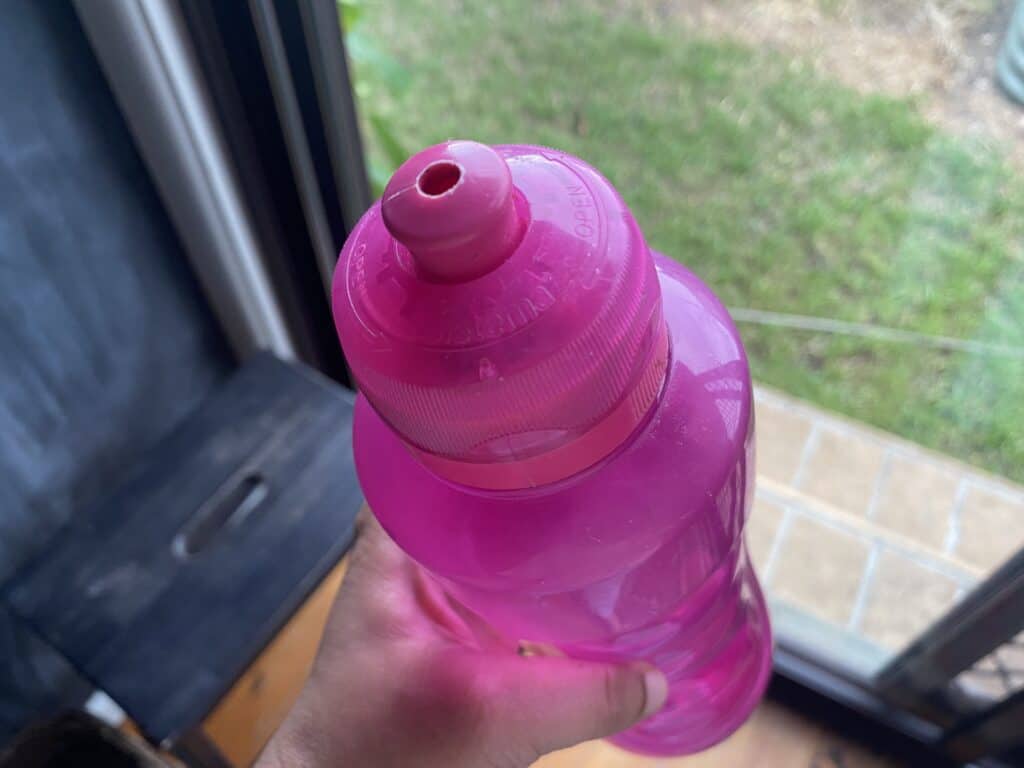
Benefits
- Convenient Hydration: With a simple push or pull mechanism, you can access your drink without the need to unscrew or flip open the lid.
- Minimized Spills: The push-pull design, when closed, creates a secure seal that helps prevent accidental leaks or spills.
- Hygiene: Many squeeze top lids feature a protective cap or cover, keeping the mouthpiece clean and free from dirt and contaminants, which is essential when using the bottle outdoors.
Drawbacks:
- Cleaning Complexity: Squeeze top lids can have more intricate parts compared to simple screw-on or flip-top lids, which can make them slightly more challenging to clean. They tend to be the worst offenders when it comes to bacterial growth.
- Durability Concerns: Some squeeze top lids may not be as durable as other lid types, particularly if they have small, moving parts that can wear out over time.
Flip-Top Lids
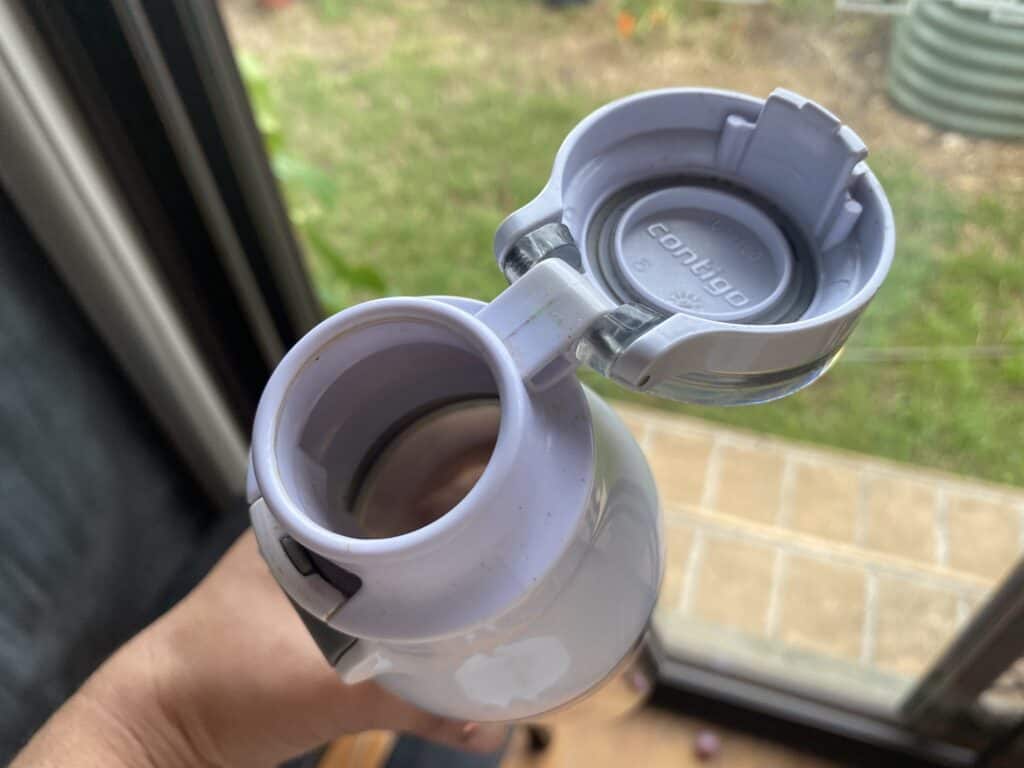
Benefits:
- Convenient Access: Flip-top lids allow for quick and easy access to your drink with one hand, making them practical for activities like driving or exercising.
- No Unscrewing Required: You can sip without fully removing the lid, reducing the risk of misplacing it.
- Spill-Resistant: Many flip-top lids have built-in spouts or straws with mechanisms that help prevent spills.
Drawbacks:
- Cleaning Challenges: Flip-top lids can have more components, making them a bit trickier to clean thoroughly.
- Not as Secure as Screw-On: While they are generally spill-resistant, flip-top lids may not provide as watertight a seal as screw-on lids, so there’s a higher chance of minor leaks.
Straw Lids
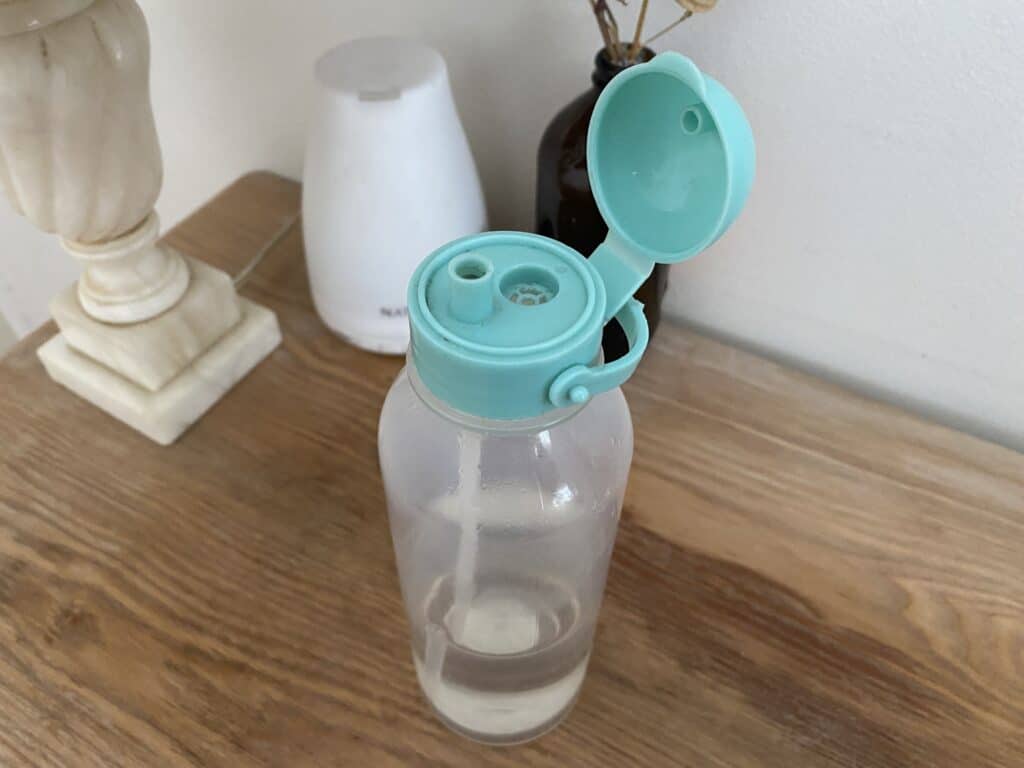
Benefits:
- Effortless Sipping: Straw lids provide a convenient way to drink without having to tip the bottle, which can be especially handy when you’re in motion or driving.
- Reduced Spills: Many straw lids have mechanisms that prevent spillage when the bottle is tipped or dropped.
- One-Handed Operation: You can sip from a straw lid with one hand, which is ideal for multitasking.
Drawbacks:
- Complex Cleaning: Straw lids have more parts, including the straw itself, which can be challenging to clean properly. They may require more maintenance to prevent mould or bacteria buildup (more on this below).
- Durability Concerns: Some straw lids might be less durable, and the straw itself can be prone to damage if not handled carefully.
Wide Mouth Sprout Lids
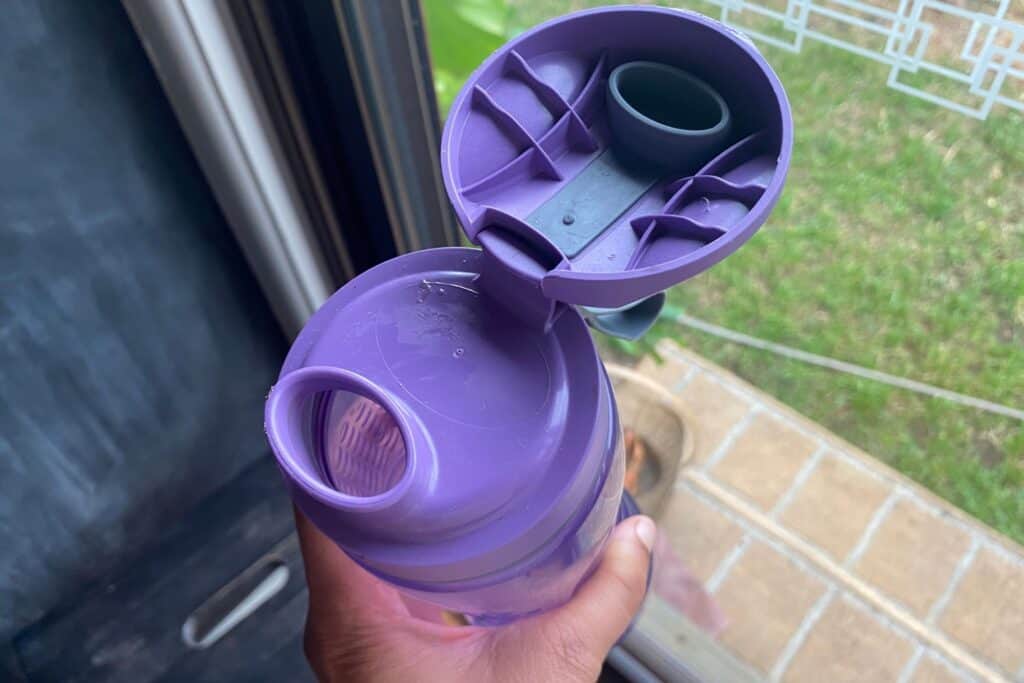
Benefits:
- Easy Filling and Cleaning: Wide mouth lids make it easy to fill your bottle with ice, fruits, or cleaning utensils, and they are a breeze to clean.
- Versatility: You can use wide-mouth bottles for a variety of beverages, including smoothies and soups.
Drawbacks:
- Potential for Spills: Wide-mouth bottles can be more prone to spills, especially if you’re drinking on the go or while moving.
- Lack of Spout: Unlike flip-top or straw lids, wide-mouth lids may not offer controlled sipping, which can be less convenient for some users.
Screw-On Lids
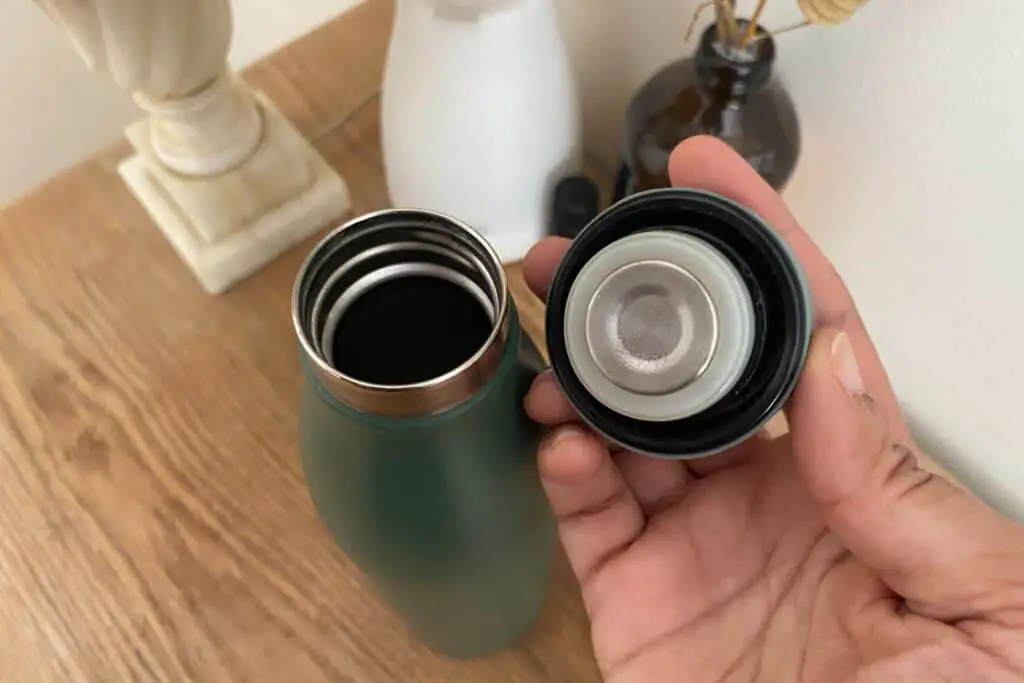
Benefits:
- Secure Seal: Screw-on lids provide a tight and secure seal, minimising the risk of leaks or spills, making them ideal for tossing into bags without worry.
- Durability: These lids are generally more durable and less prone to damage compared to flip-tops or straw lids.
- Easy to Clean: They are easy to clean and maintain because they have fewer parts and crevices where dirt or residue can accumulate.
Drawbacks:
- Slightly Slower Access: Unscrewing the lid takes a bit more time compared to a flip-top or straw lid, which might be a minor inconvenience for some users.
- Not One-Handed Operation: You typically need both hands to open and close a screw-on lid, which can be less convenient when you’re on the go.
Consider what works best for your lifestyle.
In my blog post on the best water bottles in Australia, I focused on bottles that have screw-on or wide-mouth lids.
My reasoning – they are by far the easiest to keep clean. Is this backed by science? Not really.
There are two articles you can refer to, to understand how much bacteria you can find in the lids of water bottles: this one from treadmillreviews.net and this one from waterfilterguru.com.
They both have different findings, which is not surprising.
They measured bacteria growth in different lid types. However these tests were not conducted with scientific controls in place – so different variales like how often the bottle was cleaned before the test, the specifics relating to the brand and the types of drinks these bottles contained in the past could have an impact on the results of the tests conducted.
Both tests found straw lids to have the least amount of bacteria. Significantly less. Which I found surprising and I do wonder if they tested the straw or just the lid? I imagine the straw would habour a lot of bacteria!
The other lid types they tested – flip tops, squeeze tops, screw tops, sprout lids – have similar levels of bacteria present – the same levels of germs found in water drawn from your household tap… and 40,000 x more germs than what you would find on an average toilet seat!

Source: https://waterfilterguru.com/swabbing-water-bottles/
Yeah.
Anyway. The toilet seat comparison is something I take with a pinch of salt. I’ve read similar studies that make comparisons with toilet seats and a common reason offered to explain this fact is that toilet seats are cleaned often and disinfected, while common household items, like water bottles, are not. So this difference is expected.
In my experience, straw lids, fip tops and squeeze tops have far too many crevices and hard-to-reach places, making these lid types a nightmare to clean.
So screw top or wide mouth sprout lids are the way to go.
Choosing the best reusable water bottle for the environment
Determining the single most environmentally friendly reusable water bottle can be challenging because it depends on various factors, including materials, manufacturing processes, and personal use. Ultimately the most environmentally friendly choice is one that suits your lifestyle and is built to last.
Here are some things I like to keep in mind when making the right choice for the environment:
Material: Opt for bottles made from sustainable materials, such as stainless steel, aluminium, or glass. These materials are eco-friendly because they are durable and can be recycled. Some brands also use recycled materials in their bottle production, which further reduces environmental impact.
Production Process: Consider bottles from companies committed to sustainable manufacturing processes. Some brands prioritize energy-efficient and low-waste production methods. Additionally, look for manufacturers that use fewer harmful chemicals and prioritize the health of their workers and the environment.
Recyclability: A bottle’s recyclability is a crucial aspect of its environmental impact. Look for bottles that can be easily recycled, as this reduces the waste that ends up in landfills or oceans. Many stainless steel and aluminium bottles are fully recyclable.
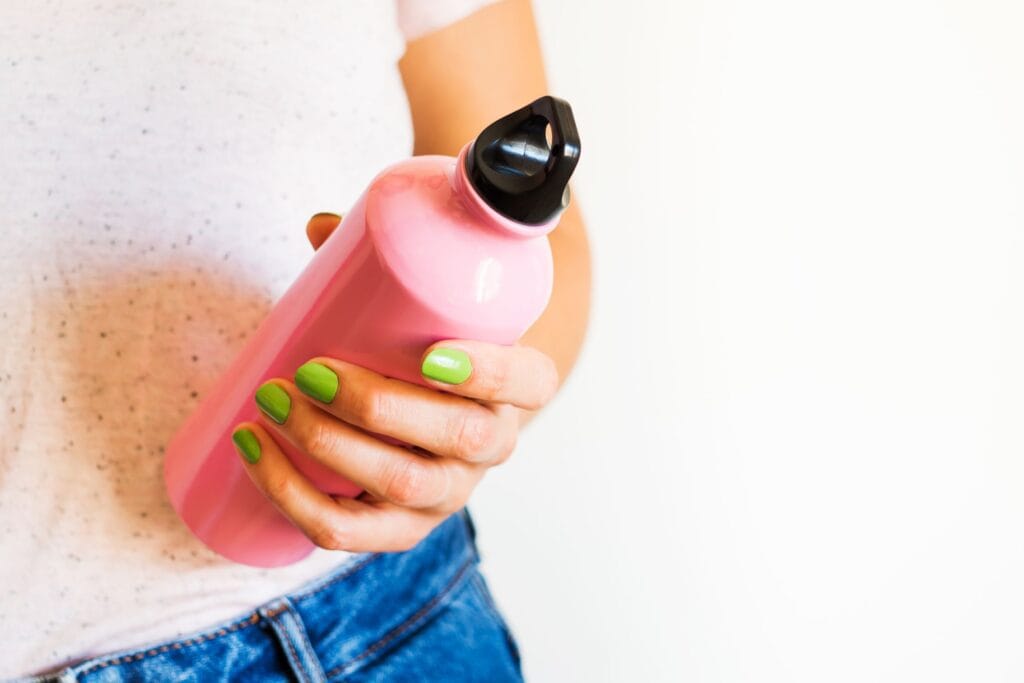
Local Sourcing: Choosing a bottle from a company that sources materials and manufactures its products locally can reduce the carbon footprint associated with transportation and distribution.
Longevity: An environmentally friendly water bottle is one that lasts a long time. Durable materials like stainless steel and glass, which are less prone to wear and tear, can be your best allies in the fight against disposable plastic.
Eco-Friendly Brand Initiatives: Some brands are committed to eco-friendly initiatives, such as using post-consumer recycled materials, participating in environmental organisations, and supporting sustainable practices. These brands often make it easier for you to choose a more environmentally friendly bottle.
Local Water Sources: Consider using tap water or a home water filtration system to fill your bottle. This reduces the environmental impact associated with bottled water production and transportation.
In my blog post on the best reusable water bottles in Australia, I was able to find a couple of bottles that ticked many of these boxes. Check out the options here.
Ultimately, I do think the most environmentally friendly reusable water bottle is one that you will use! It needs to be made well and last, yes. But it also needs to be the type of bottle that you always reach for and fits with you and your lifestyle.
If you are like me and you drop things off, well glass and aluminium is not a sustainable option.
If you find it hugely inconvenient to carry heavy water bottles, then steel and glass may not be for you and aluminium is your sustainable option or plastic if you want something more durable.
So it all depends on you. But remember, choosing any reusable bottle over single-use plastics is a significant step towards reducing your environmental footprint and promoting a more sustainable future.
Are reusable water bottles worth it?
Absolutely, yes! Reusable water bottles are more than just containers for your drinks; they are an investment in your well-being, convenience, and the health of our planet. Here are a few reasons why they are unquestionably worth it:
1. Cost-Effective: Reusable water bottles may have an upfront cost, but they save you money in the long run. By refilling your bottle with tap water or filtered water, you avoid the constant expense of purchasing single-use bottled water. Over time, the savings can be substantial.
2. Environmental Impact: The environmental benefits of using a reusable water bottle are significant. Choosing to avoid single-use plastic bottles reduces the production of plastic waste and minimises the carbon footprint associated with their manufacturing, transportation, and disposal. It’s a small change with a big positive impact on the environment.
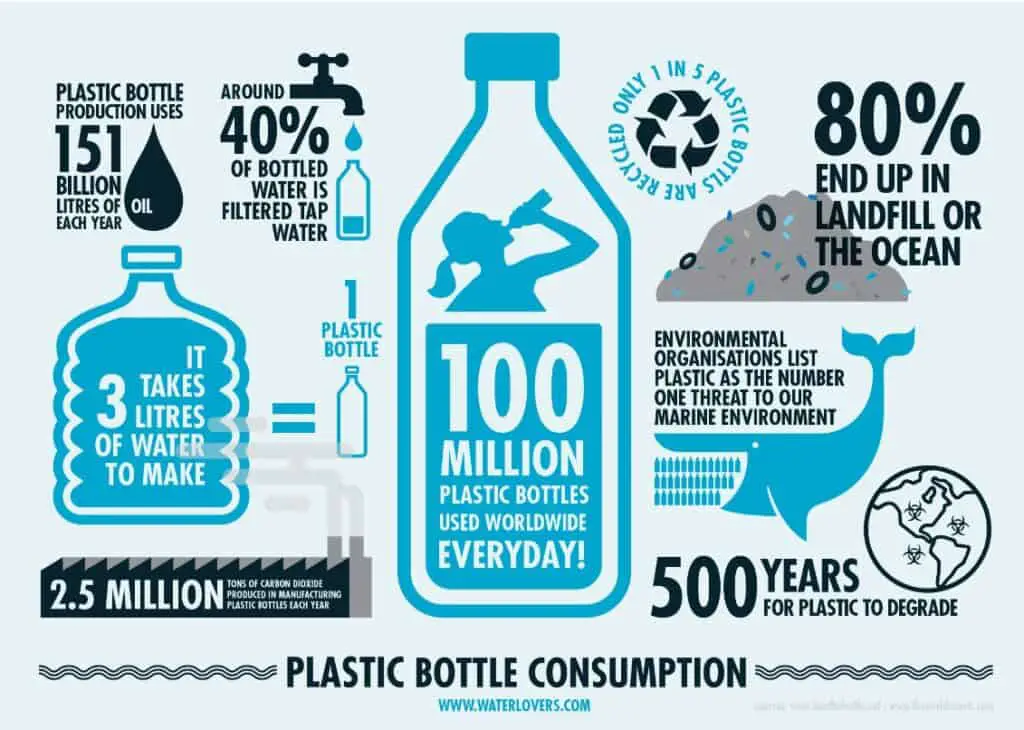
Source: https://www.waterlovers.com.au/plastic-bottle-infographic/
3. Convenience: Reusable water bottles are designed for on-the-go hydration. You can carry them with you wherever you go, ensuring that you have access to clean, safe water whenever you need it. No more searching for a store to buy water or contributing to the litter of discarded plastic bottles.
4. Health: By using a BPA-free, food-grade material for your reusable bottle, you’re making a healthier choice. You won’t have to worry about harmful chemicals leaching into your beverages, as can happen with some single-use plastic bottles.
5. Customisation: Reusable water bottles come in a variety of styles, materials, and designs. You can choose one that fits your taste and lifestyle. Some bottles even offer features like insulation to keep your drinks at the right temperature, whether it’s ice-cold water on a hot day or a hot beverage on a chilly morning.
6. Message of Sustainability: Using a reusable water bottle sends a clear message about your commitment to sustainability. It’s a tangible way to demonstrate your concern for the environment and your intention to reduce single-use plastic waste.
Choosing the right reusable water bottle can be an easy, eco-conscious decision. It’s about finding the balance between style, function (through your size and lid choice) and sustainability (through your material choice).
I recommend a stainless steel insulated water bottle with a screw-top lid. I have tried out many other reusable drinking bottles but this has by far been the most sustainable option for me. For some product recommendations along these lines, check out this blog post.
The initial investment in a reusable water bottle pays off in so many ways. So worth looking into and making the right choice because it is through these conscious choices, we can collectively work towards a more sustainable future 🌎
xxx Tahsin

